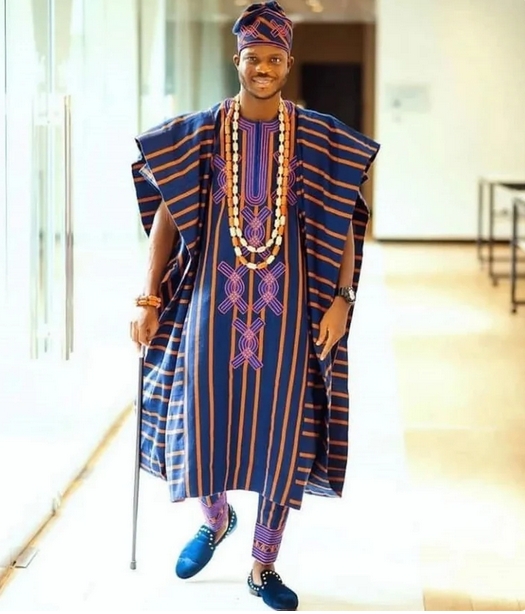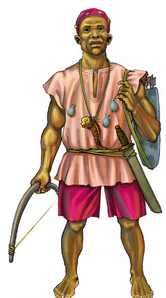
support@yorubalibrary.com
+2348073529208, 07038599574

The Agbada is a quintessential element of Yoruba traditional dress, embodying the rich cultural heritage and sartorial elegance of the Yoruba people. This flowing robe, worn by men, is a symbol of prestige, sophistication, and cultural identity.
Introduction to the Agbada
The Agbada is a long, wide-sleeved robe that is usually worn over a matching tunic and trousers. It is a prominent feature in Yoruba attire, often reserved for special occasions and ceremonies. The Agbada showcases embroidery, elaborate designs, and high-quality fabrics, reflecting the wearer's status and taste.
Historical Significance of the Agbada
The history of the Agbada dates back centuries and is deeply rooted in Yoruba traditions. Originally, the Agbada was worn by Yoruba kings and high-ranking officials, symbolizing power and authority. Over time, it became more widely adopted among the Yoruba elite and eventually became a staple of formal attire for Yoruba men.
Components of the Agbada Ensemble
1. Bùbá (Tunic)
The Bùbá is the inner tunic worn under the Agbada. It is a short-sleeved or long-sleeved shirt that fits comfortably and is often made from the same fabric as the Agbada.
2. Ṣòkòtò (Trousers)
The Ṣòkòtò are the trousers worn with the Agbada. They are typically loose-fitting and tied at the waist with a drawstring, providing ease of movement and comfort.
3. Agbada (Outer Robe)
The Agbada is the outer garment, characterized by its wide, flowing sleeves and elaborate embroidery. It drapes over the shoulders and extends to the ankles, creating a majestic and imposing silhouette.
4. Fila (Cap)
The Fila is a traditional Yoruba cap worn to complete the Agbada ensemble. It comes in various styles, such as the Gobi and the Abeti Aja, and is often made from the same fabric as the Agbada.
Fabrics and Embroidery
The fabrics used to make the Agbada are chosen for their quality and beauty. Common materials include:
• Aso Oke
Aso Oke is a handwoven fabric that is highly prized in Yoruba culture. It is known for its durability and intricate patterns.
• Lace
Lace fabrics, often imported, are used for their delicate and elegant appearance. They add a touch of refinement to the Agbada.
• Silk and Brocade
These luxurious fabrics are chosen for their smooth texture and sheen, making the Agbada look regal and sophisticated.
The embroidery on the Agbada is a defining feature, showcasing elaborate patterns and motifs. These designs are often handcrafted and can include geometric shapes, floral patterns, and symbolic imagery.
Occasions for Wearing the Agbada
The Agbada is worn on various special occasions, such as:
• Weddings
The Agbada is a popular choice for grooms and male wedding guests. It signifies respect for the ceremony and the families involved.
• Chieftaincy Ceremonies
During chieftaincy installations, the Agbada is worn to honor traditional leaders and the cultural heritage of the Yoruba people.
• Religious Festivals
The Agbada is also worn during important religious festivals and celebrations, highlighting the wearer's devotion and cultural pride.
• Funerals
At funerals, the Agbada is worn to pay respect to the deceased and to maintain the dignity of the occasion.
Modern Adaptations and Global Influence
In contemporary times, the Agbada has evolved to incorporate modern fashion trends while retaining its traditional essence. Designers experiment with different fabrics, colors, and embroidery techniques to create innovative and stylish versions of the Agbada. Additionally, the Agbada has gained international recognition, influencing global fashion and being worn by people from various cultures.
Conclusion
The Agbada is more than just a piece of clothing; it is a symbol of Yoruba identity, tradition, and elegance. Its rich history, intricate craftsmanship, and cultural significance make it a cherished garment that continues to be celebrated and worn with pride.

Learn about the Yoruba concept of Ìwà Pẹ̀lẹ́ (good…

Learn special praises for Divine Being and Creator…